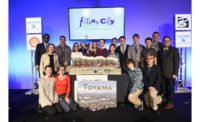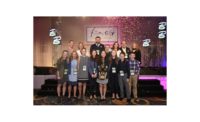WASHINGTON — A city of the future, SIDRA-XIV — engineered by students from Al-Hadi School of Accelerative Learning in Houston — has won the grand prize at the 29th year of the international 2021 Future City® Competition. The students, Mansha Ali, Mariyam Fatima, Hani Mirza, Dayyem Raza, Fatima Razzak, Mahdi Rizvi, Mohammad Ali Rizvi, Zainab Rizvi, and Sukaina Salim, teamed with educator Syeda Batool as well as volunteer mentor Syed Rizvi to earn this year’s top honors.
“This competition can help the future of this world and event organizations like NASA solve problems for the future,” said Ali Rizvi, an eighth-grader.
“What I appreciate about this competition is that I can take away many deliverables that I will use in the future, like the engineering design process,” said Ali, an eighth-grader. “I can see using the engineering design process in many situations that I will be involved with in the future.”
Since last fall, middle school students in 37 U.S. regions as well as teams from China, Canada, and Nigeria have imagined, designed, and built cities for DiscoverE’s 2020-2021 Future City® Competition. This year’s theme, “Living on the Moon,” challenges students to design life on the moon at least 100 years from now, when lunar habitats have already progressed through multiple levels of development.
What started as a collection of lunar landers expanded into an outpost, then a village, and is now a city. Future City challenges teams to build on this history, describe the city’s location, share its innovative features, and provide examples of how the city uses the Moon’s unique resources to create a place where humans can live, work, and thrive.
Al-Hadi School from the Texas (Houston) region takes home the Grand Prize of a trip to U.S. Space Camp and $7,500 for its school’s STEM program (provided by Finals sponsor Bentley Systems Inc.). Their city’s solution is based on the model the team researched, developed, and presented.
Second place went to Warwick Middle School from Lititz, Pennsylvania. The Pennsylvania (Central) region school earned honors for its city A1-Choros. The students, including presenters Claire Diffenbach, Linnea Miller, Jacob Soslow, and Austen Van Grouw, teamed with educator Michael Smith along with volunteer mentor Christian Kegel. The school receives a $5,000 scholarship for its STEM program, sponsored by the National Society of Professional Engineers (NSPE).
Altera Domi - engineered by the Missouri region’s St. Clair Junior High School in St. Clair, Missouri, took third place honors. Their program receives a $2,000 scholarship for its STEM program, sponsored by Shell.
Honorable mentions for fourth place went to St. John Lutheran School in Rochester, Michigan, from the Michigan region, for its future city Getaway Station Armstrong (GSA).
Spartemis City — engineered by students from Richard H. O’Rourke Middle School in Burnt Hills, New York, (New York Albany region) took fifth place. Each school receives $750 for their organization’s STEM programs, sponsored by National Council of Examiners for Engineering and Surveying (NCEES).
Working as a team with an educator and STEM mentor, students present their vision of the future through a 1,500 word city essay; a scale model of their city (built with recycled materials); a project plan to help keep their project on track; a short video presentation; and a live, online Q&A session with a panel of technical judges. Keeping the engineering design process and project management front and center, students are asked to address an authentic, real-world question: How can we make the world a better place?
Future City has ongoing opportunities for engineering and technical professionals to volunteer in a number of different roles, including team mentors, virtual competition judges, and regional coordinators. For more information about Future City and volunteer opportunities, visit www.futurecity.org.




